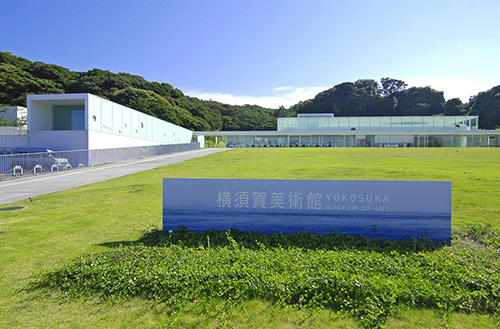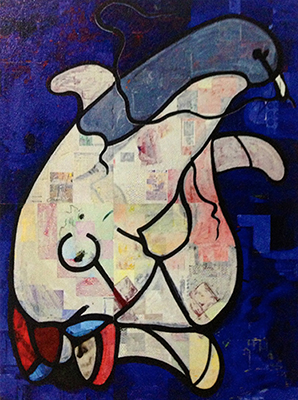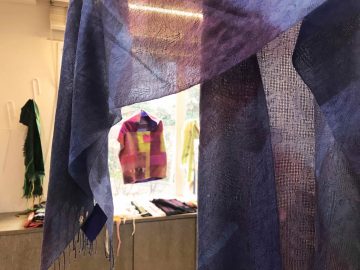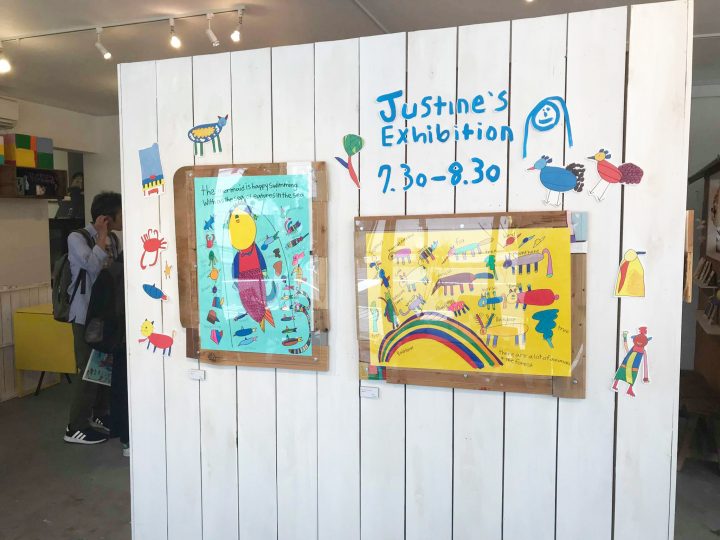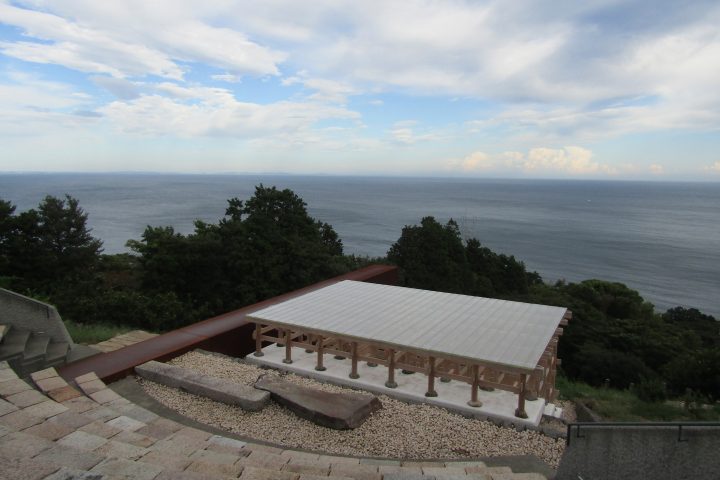I went to the Yokosuka Museum of Art's "Chasing Japanese Monsters!" exhibition.

I'd like to see the exhibit right away.
This exhibition is categorized into three rooms according to era and artist. This time, I was accompanied by the curator in charge, Mr. Hinohara, so I would like to report on the rooms in order, including his commentary.
First, we went to the first floor to see Edo-era monster paintings. Starting with Toriyama Sekien's "Gazu Hyakki Yakou," there were a selection of works on display, ranging from human-shaped monsters to animal-like monsters such as foxes, raccoon dogs, and kappa.
The one that caught my eye the most, or rather the one that made me laugh, was Utagawa Hirokage's "The Great Battle of the Blue Fish Armies."
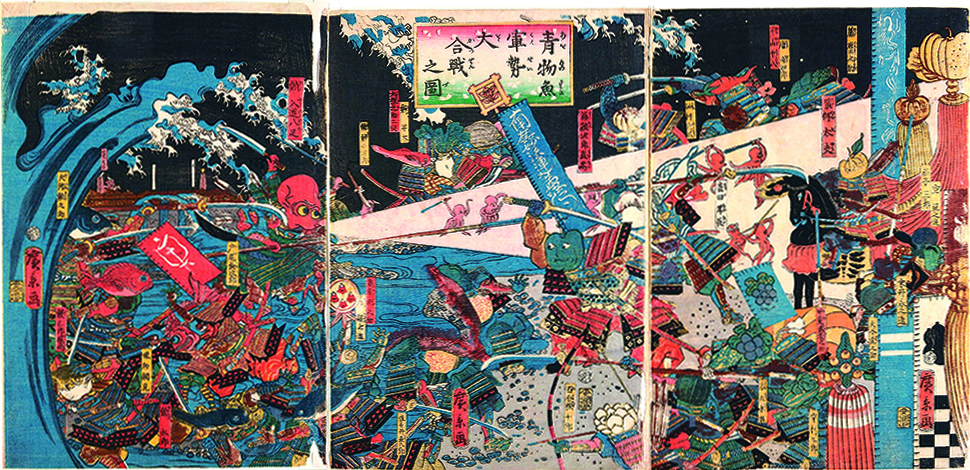
Utagawa Hirokage, "The Great Battle of the Blue Fish Forces" (first half of the exhibition), Osaka Castle Keep
It is a picture of an army of fish led by octopus, sea bream, and shrimp fighting against personified green fish led by onions and grapes on the beach. Who would have thought that even something like this would be included in the category of yokai! (But if this is not a yokai, then what is it...is it a yokai after all?)
Upon closer inspection, the characters have quirky names like "Mikan Tayuu" and "Namazu Taro" next to them, making the comics humorous down to the last detail. When I learned that the comics have an underlying theme of satirical cartoons based on the cholera epidemic that occurred the previous year, I was even more drawn to the comics.
There were also other items such as a Yokai Sugoroku game and a card game that you can cut up and play with. Despite being nearly 150 years old, they all felt strangely familiar to me.
"Back then, there were things you could assemble into 3D shapes out of paper," he explained, and I was astonished to discover that the magazine supplements I was so familiar with as a child had their origins in the Edo period!
The second floor moves further in time, showcasing yokai paintings from the Meiji and Showa periods.
Newspapers were born in the early Meiji period, and articles about monsters were reported to the public.
"Even though they were called newspapers, it was a while before they became like newspapers today. In the early Meiji period, newspapers were still in a format similar to woodblock prints, and only had one page."Even so, it's amazing that articles like "a ghost has appeared in such and such a place!" were distributed as newspapers.
"Of course, there were people who were skeptical of ghosts or other spiritual beings, but at the time, stories about dead people appearing as spirits were widely accepted among the general public," Hinohara told us.
On the other hand, it is interesting to see the influence of modernization everywhere, such as the characters having their hair cut and a Western angel being placed next to the name of the newspaper.
If you go further, you will come face to face with a ghost painting on a hanging scroll.
In stark contrast to the humorous works, there was something creepy about them. I was impressed by the children who were looking at Fuyuko Matsui's works, who were so impressed by how realistic they were that they shouted, "It's like it's coming into my dreams!"
On the other hand, Ogawa Ikusen's monster paintings are symmetrical and the motifs are drawn in a lovely way, which made me feel strangely warm and fuzzy.
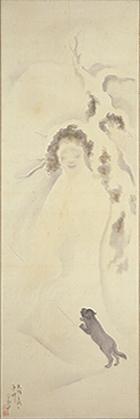
Ogawa Ikuzen "Snow Woman" Collection of the Museum of Modern Art, Ibaraki
Behind it is the long-awaited(?) yokai painting by Shigeru Mizuki!
"The color works are copies of ink drawings that I have then colored. They are certainly worth looking at, but the monochrome works allow you to appreciate the brush strokes more," Hinohara advised, and when I compared the two, I could certainly feel the fine strokes of the brush in the monochrome works.
I was able to enjoy a wide range of works, from those that followed the past monster paintings to works that have a completely different, unique perspective from Shigeru Mizuki. The original drawings are bigger than I thought.
The last section of the second room introduces yokai that have appeared in artworks since the postwar period. In a complete departure from the previous sections, there are not many works of so-called traditional yokai.
Tatsuo Ikeda's images of monsters are allegories of social issues, while Eiko Urushibara portrays people as elephant-like monsters.
When we look at how modern yokai have been "treated" in this way, both in society and within the inner self, it seems that even though the appearance of yokai has become vague, they may have become more familiar to us.
The third room will feature three contemporary artists who use the expression of yokai.
Hinohara said, "In today's world, expression has become so diverse and fragmented, so I decided to narrow down the artists I would like to show."
Francois Fujii, who uses monsters in his paintings like those of Jakuchu,
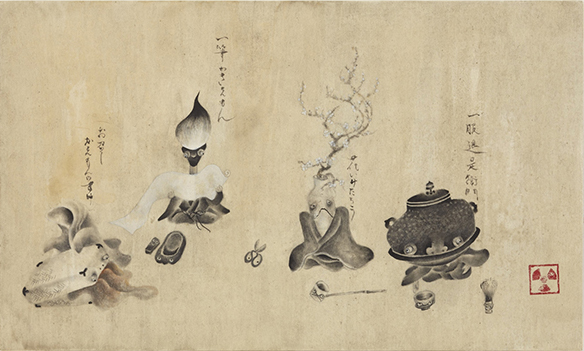
Fujii Francois "Tsukumogami-I" Private collection
Noriko Kamata's dolls are creepy, but when you look at them, you strangely start to feel attached to them.
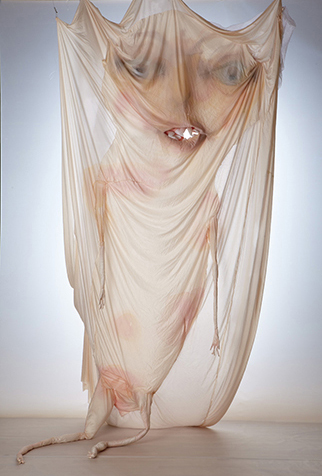
Noriko Kamata, "The Slacker" Private collection
Michiko Imamichiko takes black and white photographs of objects made from vegetables and fish.
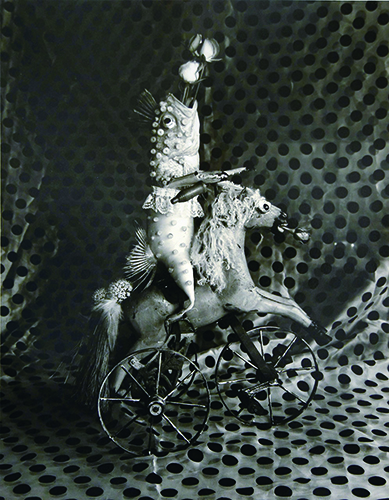
Michiko Ima "Horse-drawn Tricycle" Artist's Collection
Each artist has their own unique and completely different approach to yokai, so it's certainly diverse. It's also interesting that, coincidentally, all three artists are women.
The exhibition ended with me feeling excited about what kind of "Yokai paintings" would be created in the future. (Next is the museum report!)
~bonus~
This time, the public relations officer not only guided us around the exhibition, but also the museum itself. I will introduce some of them with photos. The top floor is an observation deck from which you can see the sea that spreads out before your eyes.
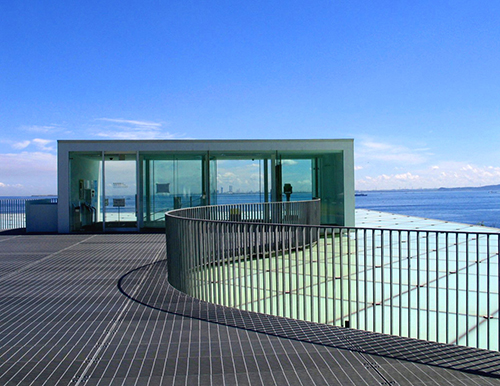
You can use the large binoculars, which allow you to see the man on the boat clearly, for free.
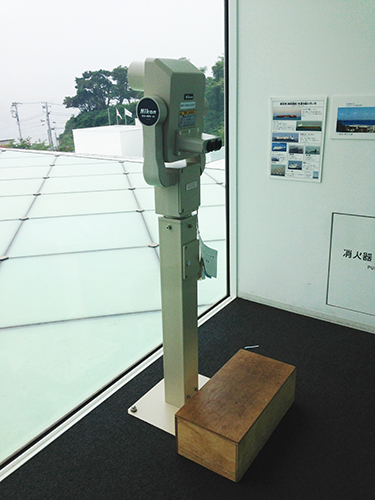
This is the permanent exhibition hall. It is spacious and you can leisurely view each piece.
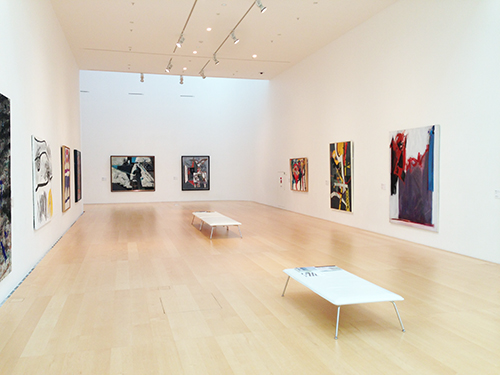
In addition, the restaurant and library were also bustling with people, and I realized that the museum is not only popular as a museum, but also as a place of relaxation for local residents, and is loved by many people.
I wish there was a museum like this near me...
■ Writer Profile ■
/////////////////////////////////////////////////// /////////////////////////////////////////////////// ////////////////////////////////////////
Daigo Kobayashi
In 2009, he entered Tama Art University, majoring in Japanese painting.
I mainly create two-dimensional artworks, and occasionally write picture books and writings.
Her favorite tofu is silken tofu. The photo shows her piece "Butoh."
Website: http://kobayaashidaigo.jimdo.com/
/////////////////////////////////////////////////// /////////////////////////////////////////////////// ////////////////////////////////////////
